Why You Should Use Kloudbean for Elasticsearch Database:
Kloudbean offers a simple and efficient way to launch and manage an Elasticsearch database, with an intuitive interface and minimal setup time. Our Elasticsearch databases are finely tuned for optimal performance, ensuring lightning-fast search capabilities and real-time data analytics.
Kloudbean also provides advanced scaling and replication features, ensuring your Elasticsearch deployment can handle increasing data and traffic. Whether you're powering search engines, data visualizations, or log analytics, Kloudbean's Elasticsearch hosting offers unmatched reliability and performance for mission-critical applications.
Now, let’s go ahead and see a demo of how we can launch an Elasticsearch database in real-time on Kloudbean.
Step 1: Accessing DBS section from dashboard.
From the dashboard we can go to DBS (Database System) section by a simple click on Managed Database to view existing databases. Clicking on it should take us to databases section.
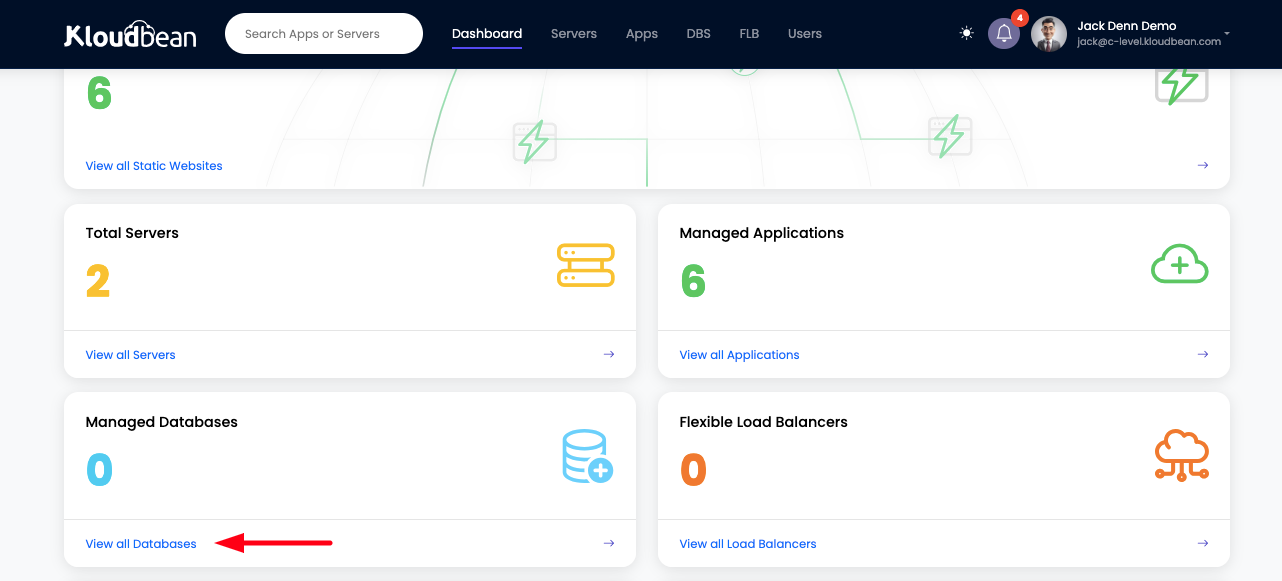
In database section, we currently do not have any database. In order to launch a new database, Click on Launch Database button.
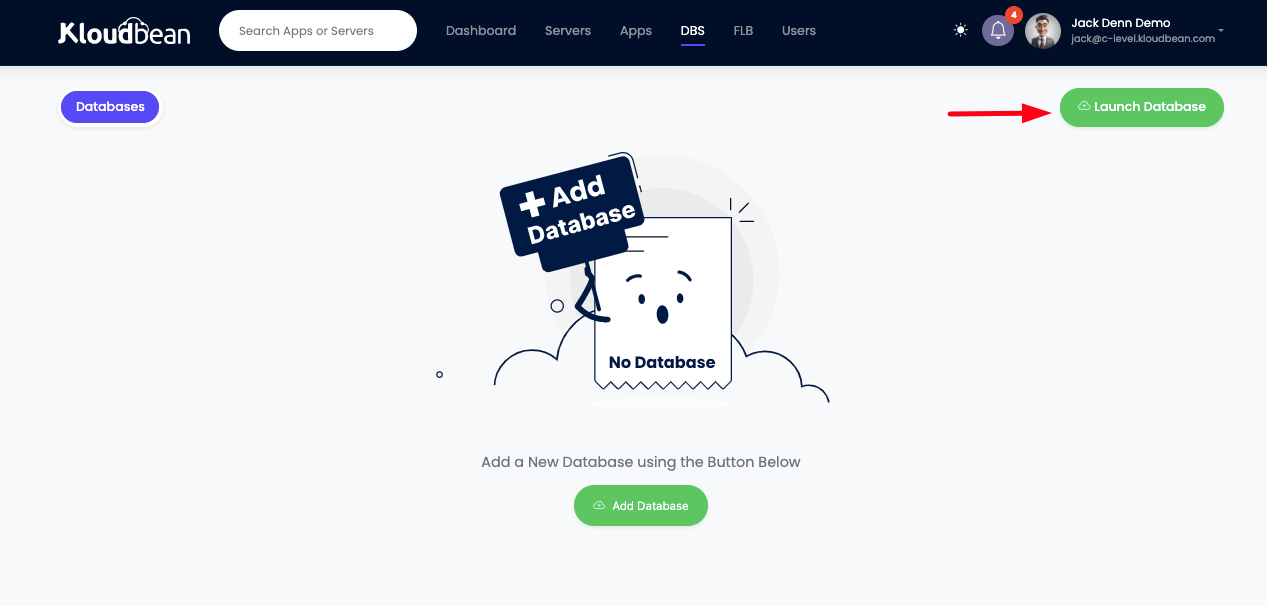
With this a new database launch panel should open and asking for the selection of required database along with other database basic configurations.
Step 2: Launching new Elasticsearch database
In our case we are going to launch Elasticsearch database in this tutorial, so let's go ahead and select Elasticsearch from the database options.
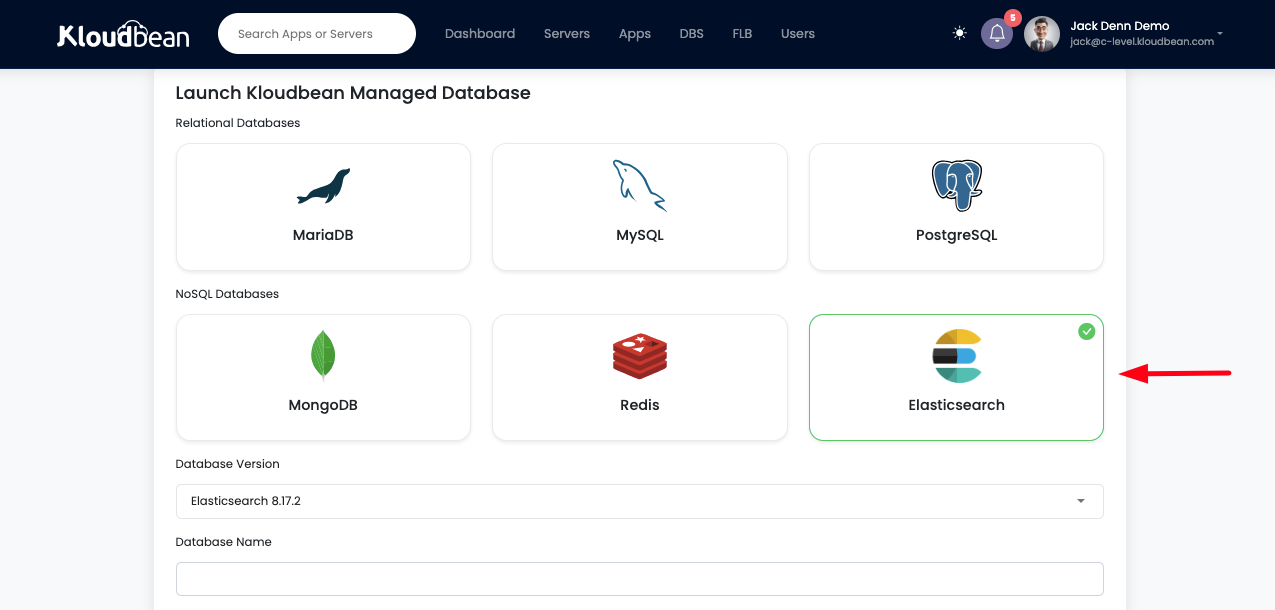
Once database is selected, we will see all the database version including most recent one is available in the dropdown of field Database Version. If we have a requirement of any specific database version, we can select that particular version or we can select most latest one.
Along with database version, we have to add or select following important detail as well.
Database Name: This is going to be name of our database and the database that will be created as default in our Elasticsearch server.
Database User: This is going to be the administrator user of the database, which is going to have maximum privileges.
Server Location: This is the physical location of the database server, try to select the location that is closest to the application server.
Server Size: Depending on the workload and application size, choose server size which better fits the requirement. For best performance, try to choose Dedicated servers, as their hardware are not shared and provide maximum performance.
After selecting all these fields, Click on LAUNCH DATABASE button to proceed to payment and then database will be launched.
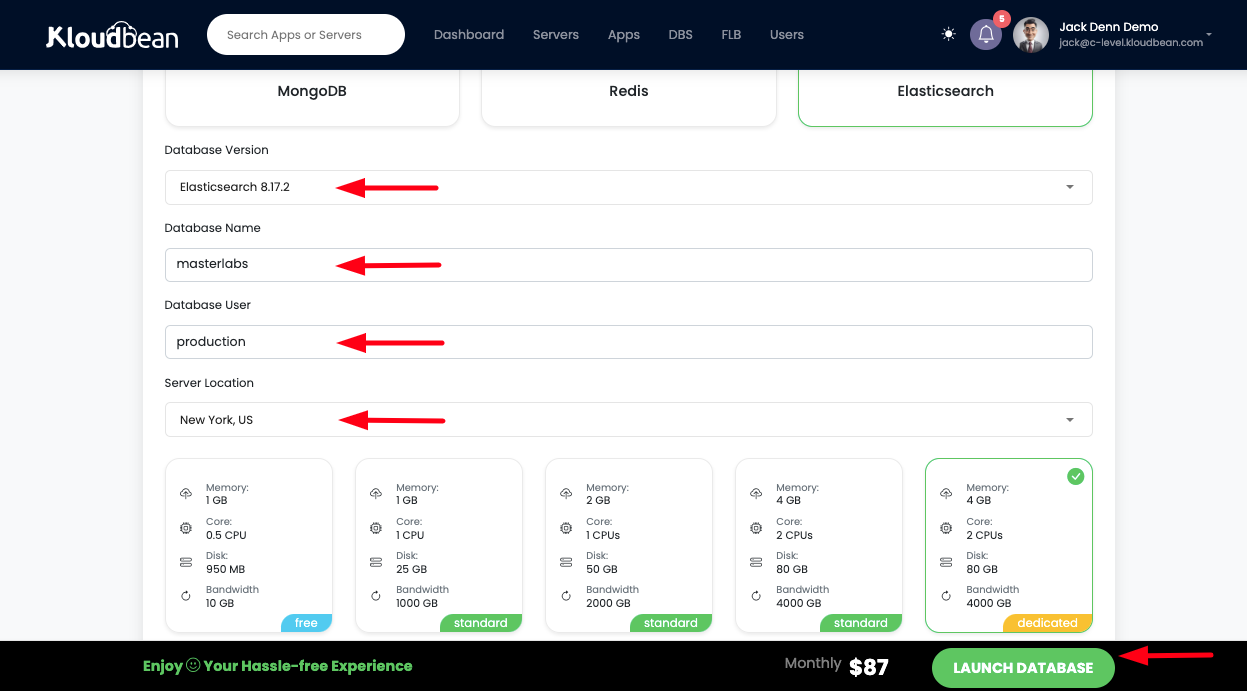
Launching new database takes approximately 4 to 5 minutes to fully create and ready to use. Once data creation is complete, we can access database detail by clicking on the database that is just created, in this tutorial we created Masterlabs database.
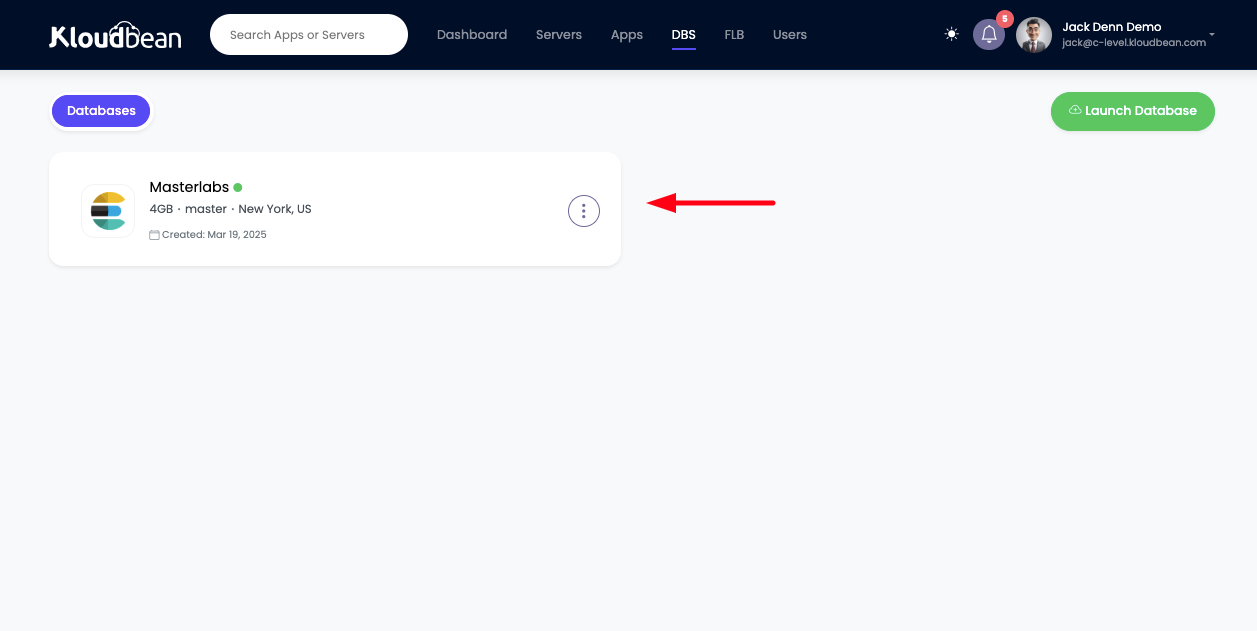
Once we click on database, it will take us to database detail section, where we will find following useful information, that is must required in order to access database or connect database with the application.
Host: This is database host name, a unique url for the database, to access it over the internet. Instead of host we can optionally use IP Address as well.
Master User: This user has administrator privileges over the database.
Password: This is the password for master user to authenticate elasticsearch database.
Public Access: This field represent our current settings for the database, as of now our database is not accessible from anywhere, until to manage or update it's access from Firewall section. currently public access is completely disabled.

As database has been created, we can now try to access this.
Step 3: Accessing Elasticsearch using CURL.
Use following command to access elasticsearch database api through CURL:
## Getting cluster status
# curl http://<Host>:9200
curl http://masterlabs-us-southeast-13569.kloudbeansite.com:9200At this point when we are trying to connect to database, we are not receiving any response, this is because currently database access is completely disabled and we are not able to connect.
ERROR: CONNECTION TIMEOUT
This connection timeout is legitimate, as Kloudbean by-default keep database access disabled in order to ensure database security. However user has option to allow access.
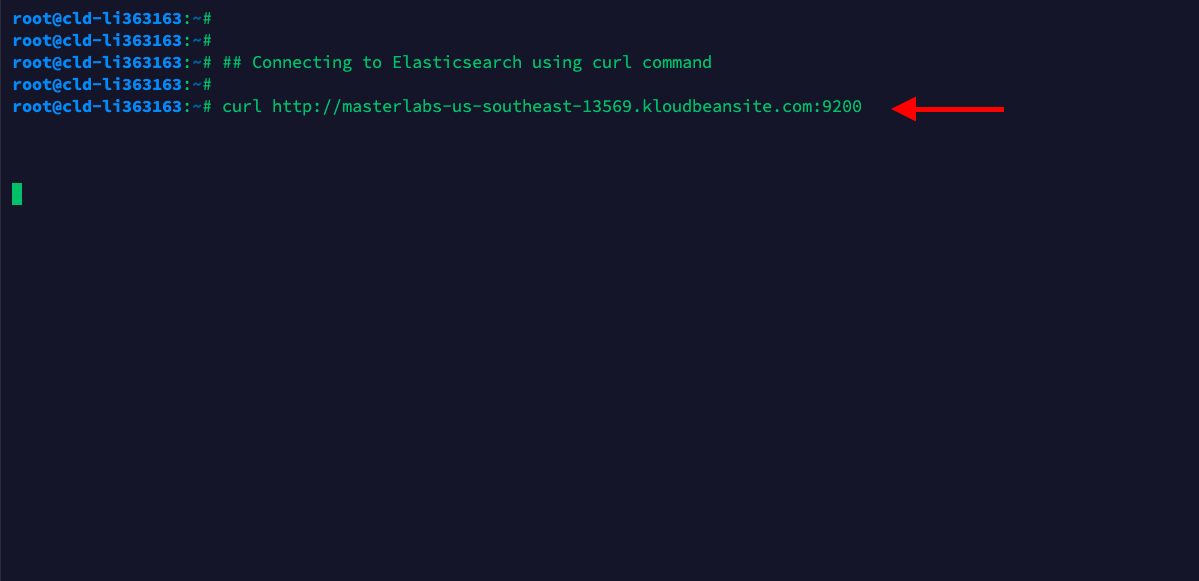
Step 4: Allowing database access (Whitelist IP Address)
If we want to access database from our local machine, we have to enable public, however enabling public access is not recommended at all, but in some cases we can enable public access and disable it immediately after making changes through public access from local machine.
To enable public access. Go to Firewall tab and select the following option;
"Allow database public access" and hit Submit button.
This should turn on database public access. but this is not recommended as allowing public access can open database for incoming traffic and intruders can try to gain your database access, hence in this step we are going to see how to allow access only from particular IP addresses by whitelisting it.
Use the mention command to get remote server's public IP address, from where we suppose to access database.
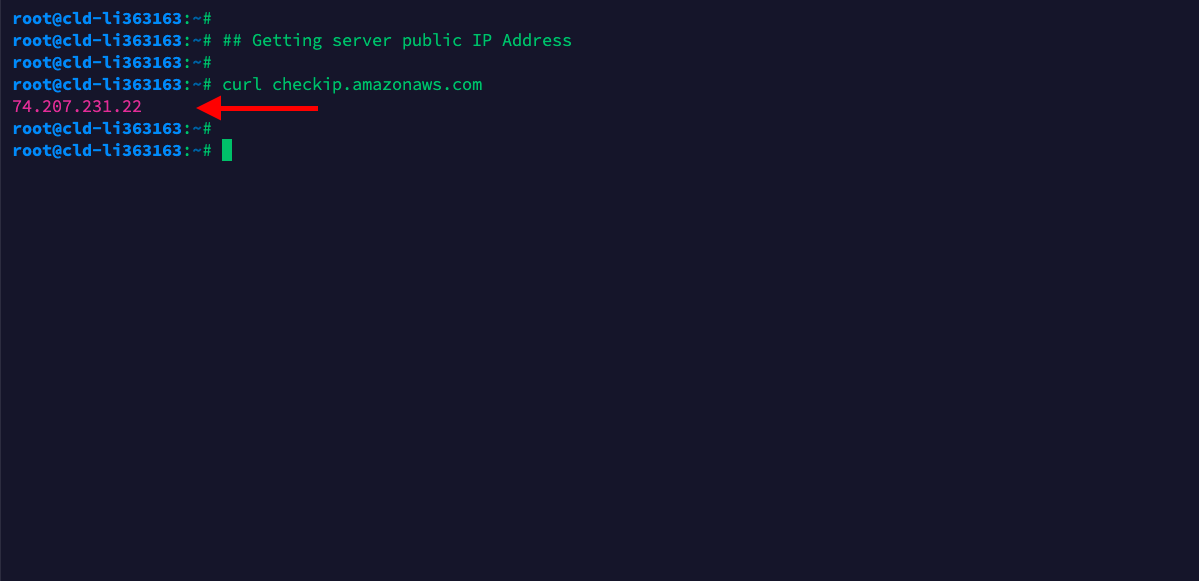
Go to Firewall section and this time choose option ;
"Only allow following IP address to access database".
Add the IP address. We can add multiple IP Addresses as per demand. Once added, click on Submit button to whitelist these IP addresses.
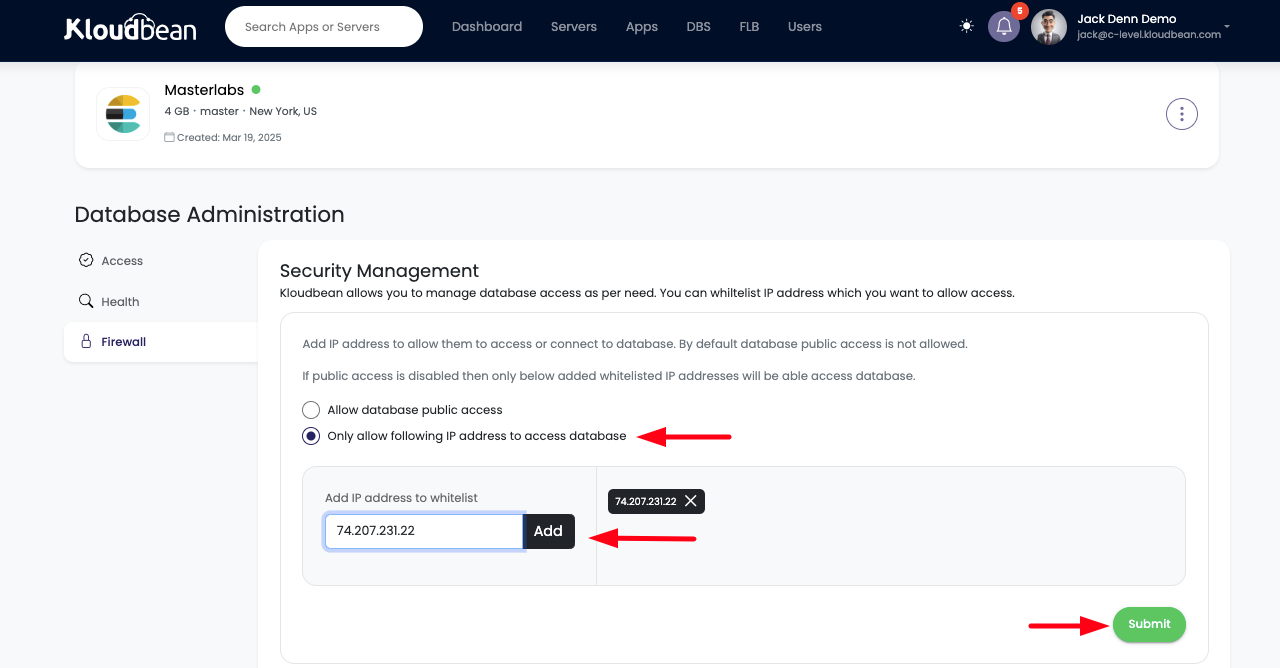
Step 5: Accessing database after whitelisting IP Address.
Now that server IP address has been whitelisted, we should be good to access database.
Execute following curl command to get elasticsearch status;
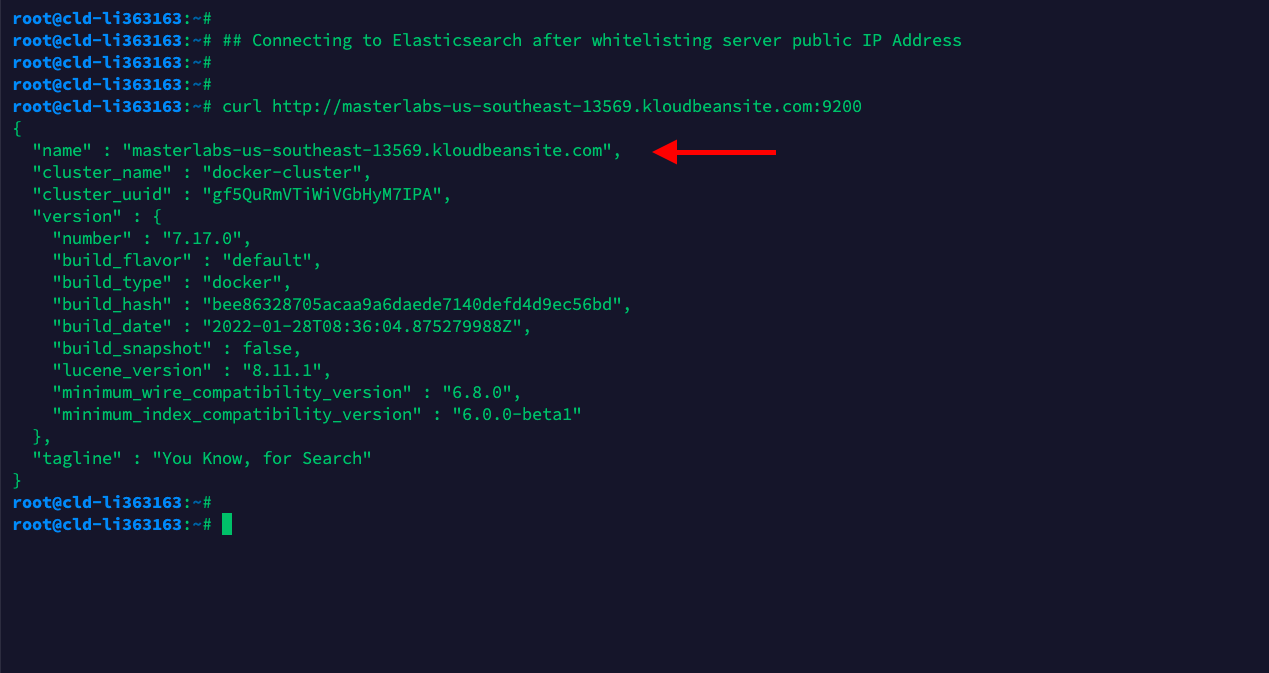
Hurrah!! We are successfully connected now.
Now that we are connected to database, Let's go ahead and try some queries.
Getting cluster health (Optional)
curl -X GET "masterlabs-us-southeast-13569.kloudbeansite.com:9200/_cluster/health?pretty"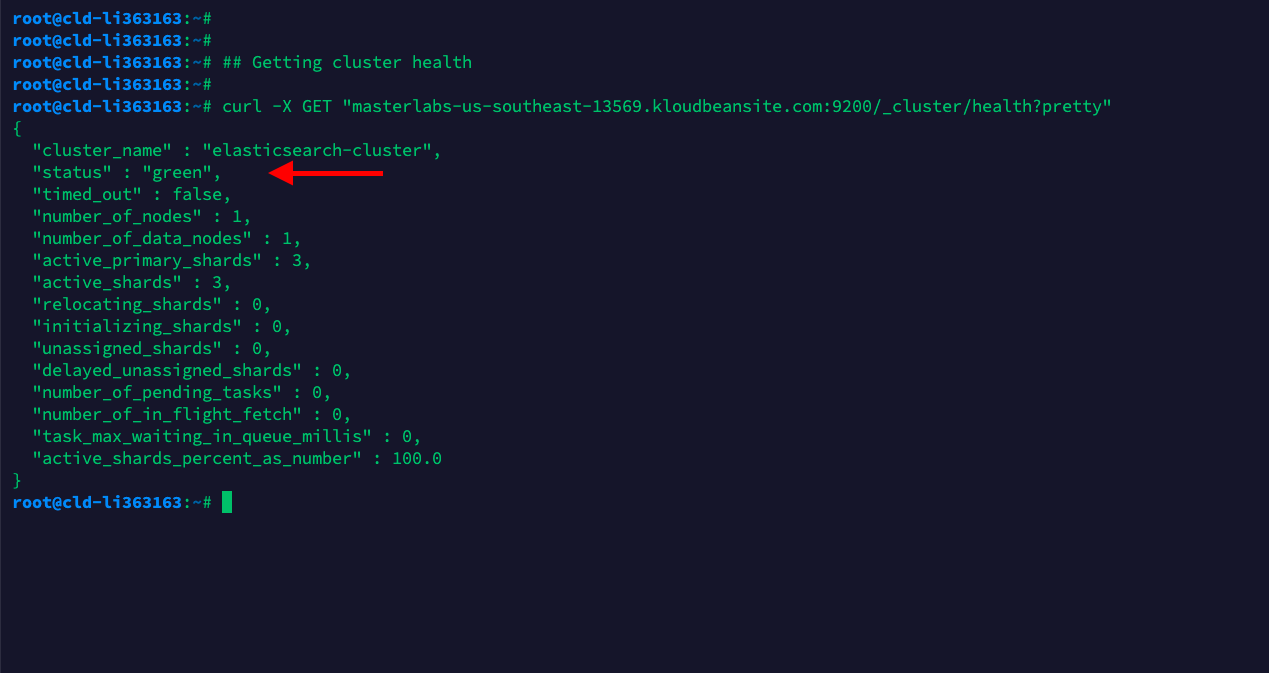
Getting elasticsearch indices (Optional)
curl -X GET "masterlabs-us-southeast-13569.kloudbeansite.com:9200/_cat/indices?v"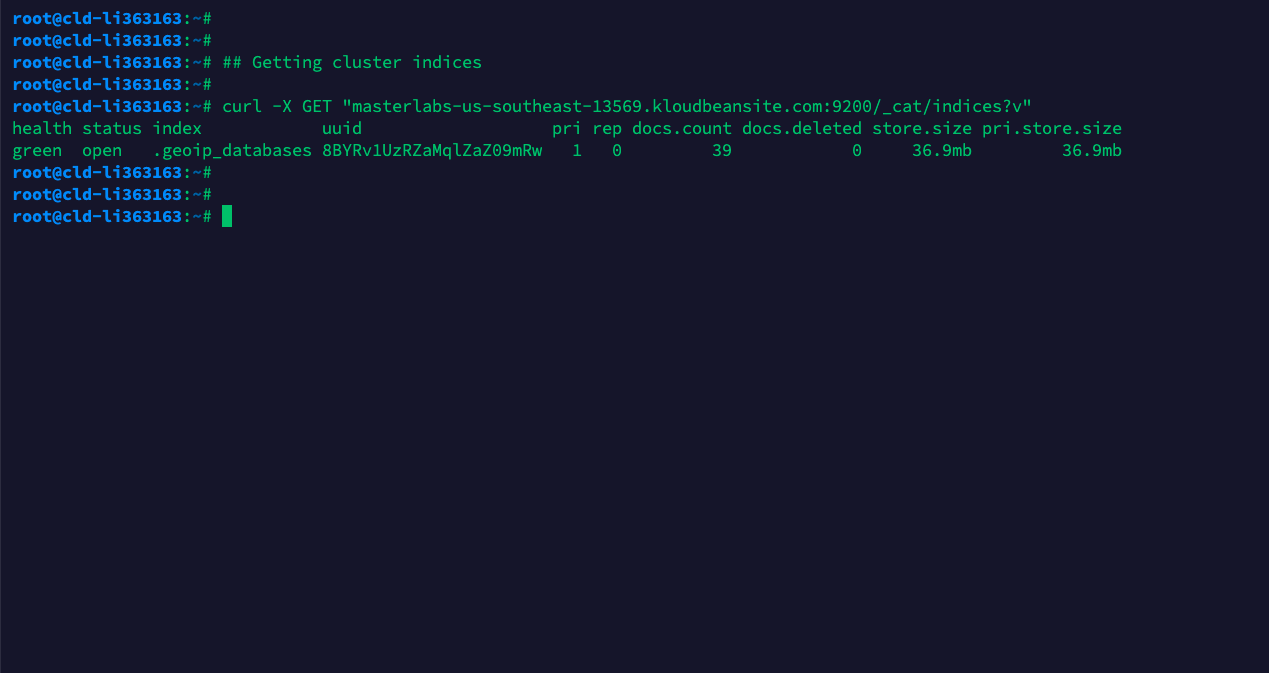
Creating elasticsearch index (Optional)
curl -X PUT "masterlabs-us-southeast-13569.kloudbeansite.com:9200/kloudbean_test_index?pretty"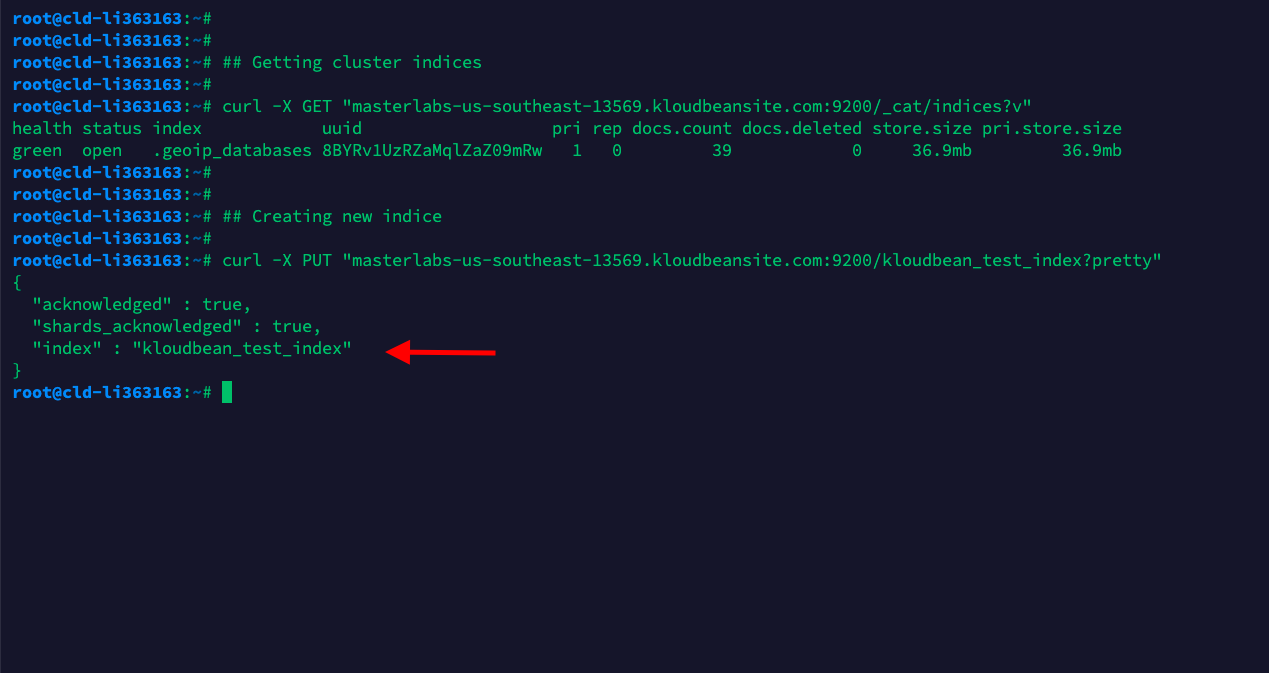
Adding a document to index (Optional)
curl -X POST "masterlabs-us-southeast-13569.kloudbeansite.com:9200/kloudbean_test_index/_doc/1?pretty" -H 'Content-Type: application/json' -d'
{
"title": "Hello Kloudbean",
"content": "This is a test document."
}'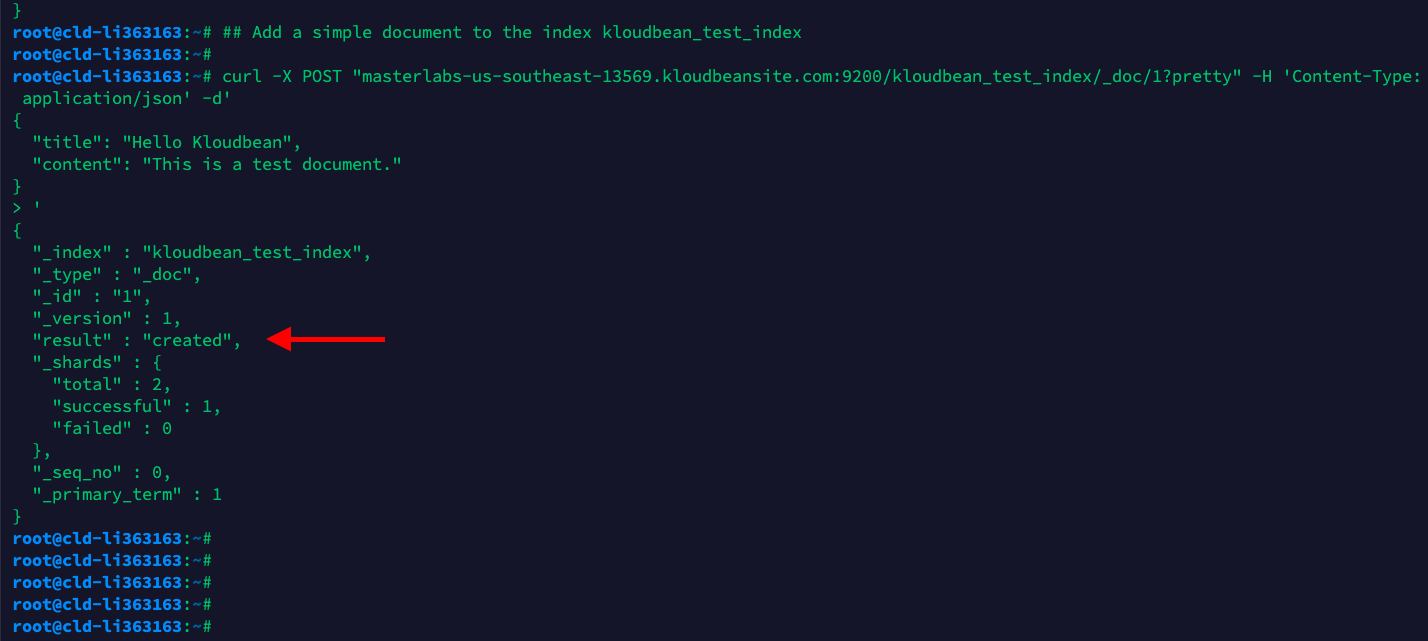
Search for the document (Optional)
curl -X GET "masterlabs-us-southeast-13569.kloudbeansite.com:9200/kloudbean_test_index/_search?q=title:Hello&pretty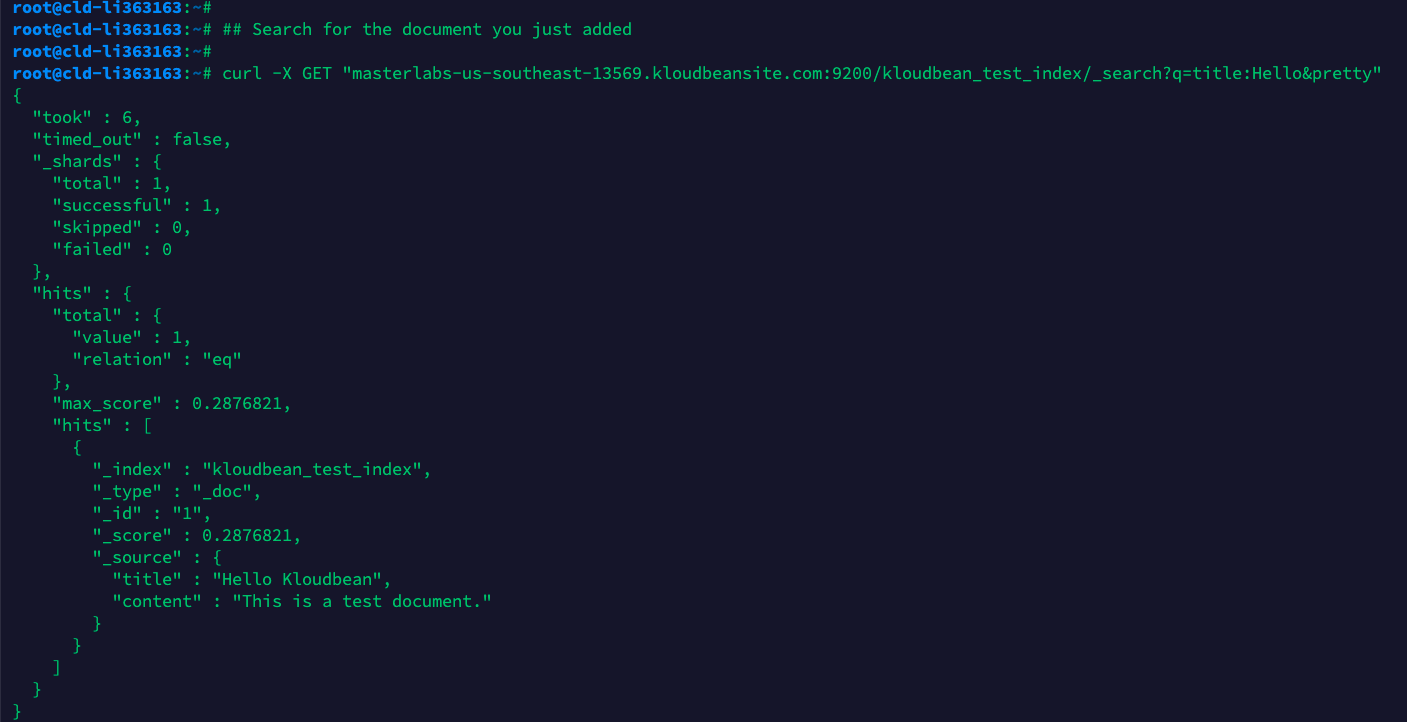
That's all for launching and accessing elasticsearch database using Kloudbean Managed and highly optimized database solution.
Conclusion
Kloudbean makes launching and managing Elasticsearch databases fast, easy, and secure, removing the complexities of search and analytics database administration. With just a few clicks, your Elasticsearch database is up and running, delivering optimized search performance, real-time analytics, and powerful scalability for your applications. Kloudbean’s advanced features ensure reliability and efficiency, making it the ideal choice for high-performance Elasticsearch hosting.
If you encounter any issues while setting up or managing your Elasticsearch database on Kloudbean, our expert support team is available 24/7 to assist you.